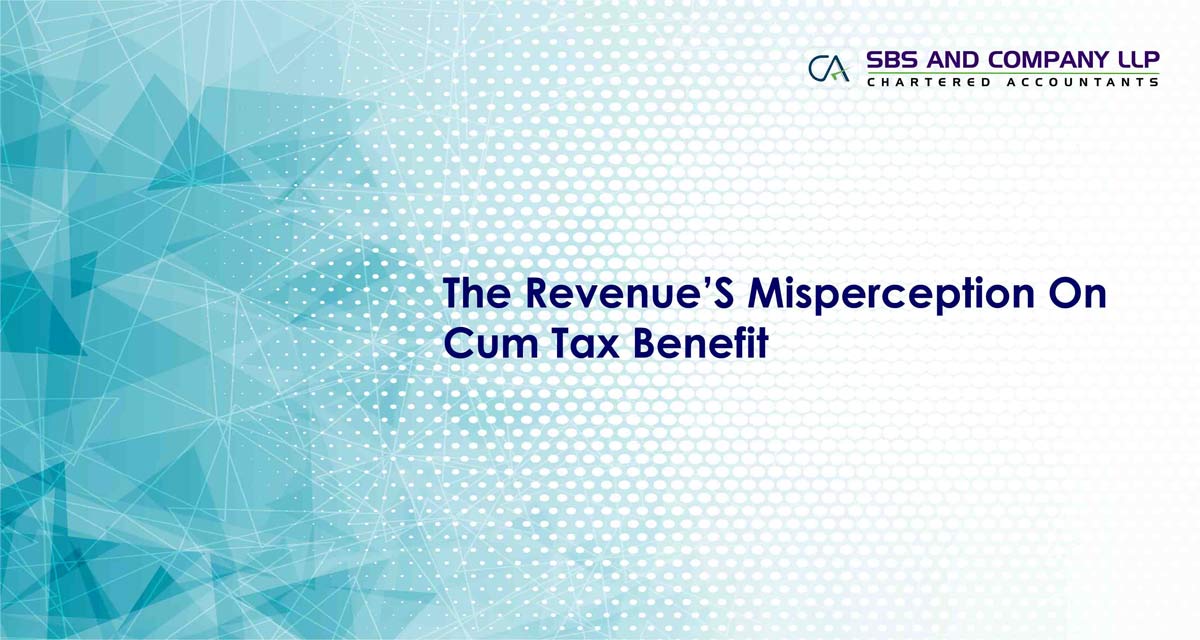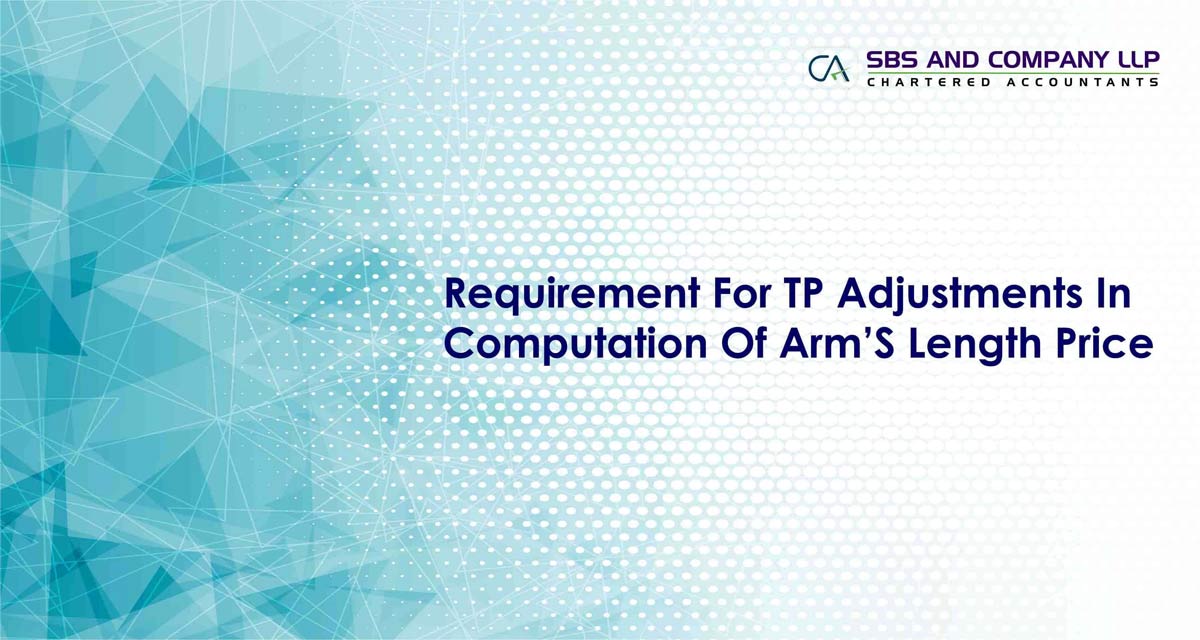|
The provisions regarding Cum Tax/Cum Duty is available both under Central Excise Act, 1944 and Finance Act (Service Tax Law) under Section 4(1) and Section 67(2) respectively. Accordingly, wherever service tax or excise duty is not separately collected, assessee is entitled to compute their tax liability treating the gross amount collected as inclusive of service tax/excise duty.
Though this appears to be simple, straightforward benefit to assessees, but it is not so in reality considering the litigation that took place on this benefit. The vehemence contention of the Revenue is that mere non-collection of service tax/excise duty does not entitle the assessee for this benefit; the invoice should indicate that the amount charged is inclusive of service tax/excise duty. The article aims to demystify the ambiguity surrounded this straightforward benefit.
Is It Possible under Law to Issue an Invoice Inclusive of Taxes?
As stated above, the main contention of the revenue for declining this benefit is that the invoice issued to Service Provider/Customer should indicate that amount charged is inclusive of service tax/excise duty. In this context, it is relevant to examine whether it is legally possible to issue an invoice inclusive of service tax/excise duty or not.
Section 12A of Central Excise Act, 1944 provides that every person who is liable to pay duty of excise on any goods shall at the time of clearance of goods, prominently indicate in all goods relating to assessment, sales invoice, and other like documents, the amount of such duty which will form part of the price at which such goods are sold. The said section is also made applicable to Service Tax law vide Section 83 of the Finance Act, 1994.
This section begins with Non-obstante clause ‘Notwithstanding’ which means that this section has overriding effect even in case of inconsistency with other provisions of the Act. Thus whenever assessee is of the view that excise duty/service tax is applicable or at least doubtful but decides to collect, then he has to prominently indicate the same in the invoice. Thus in case, he issues invoice as inclusive of excise duty/service tax, then the same is in contravention of this section.
The question of non-collection of excise duty/service tax arises only when the assessee interprets that excise duty/service tax is not applicable on particular goods/services as the case may be. The issue of cum-tax benefit arises in that case only. Section 11D of the Central Excise Act, 1944 assessee should not collect any amount in excess of duty assessed or determined to be payable by representing it towards excise duty. Similarly Finance Act, 1994 contains section 73A.
Thus in a scenario, where assessee is at least doubtful of excise duty/service tax applicability and issues invoices saying price is inclusive of excise duty/service tax and subsequently if he claims that no duty/tax is payable, still he may require to deposit the portion representing excise duty in such inclusive price because this may indirectly tantamount to collection of some portion of price representing excise duty which is not statutorily payable.
Thus it may be practically impossible for an assessee to issue an invoice inclusive excise duty/service tax without contravening the law. Even if he does so and subsequently claims that no excise duty/service tax is payable, he may be required to pay to Government the portion representing excise duty/service tax from such inclusive price in terms of Section 11D/Section 73A as the case may be.
Presumption of Passing the Incidence of Excise duty/Service Tax:
The Cum-Tax provisions of Central Excise & Service Tax law are reproduced as follows;
|
Central Excise |
Service Tax |
|
Expln to Section 4(1): For the removal of doubts, it is hereby declared that the price-cum-duty of the excisable goods sold by the assessee shall be the price actually paid to him for the goods sold and the money value of the additional consideration, if any, flowing directly or indirectly from the buyer to the assessee in connection with the sale of such goods, and such price-cum-d uty, excluding sales tax and other taxes, if any, actually paid, shall be deemed to include the duty payable on such goods |
Section 67(2): Where the gross amount charged by a service provider, for the service provided or to be provided is inclusive of service tax payable, the value of such taxable service shall be such amount as, with the addition of tax payable, is equal to the gross amount charged. |
In terms of the above sections, whenever, excise duty/service tax is not separately collected by the assessee as the case may be, then the price of the goods or the gross amount charged for services shall be deemed to include excise duty/service tax as the case may be.
In terms of Section 12B of the Central Excise Act, 1944, there is an irrefutable presumption that every person who is paying excise duty on goods shall be deemed to have passed on the full incidence of such duty to the buyer of such goods. This section is made applicable to service tax also vide Section 83 of the Finance Act, 1994. It is because of this presumption, Revenue proceed to recover tax dues from assessees irrespective of the fact whether excise duty/service tax is collected by them separately from customer or not.
The Supreme Court in the case of Hindustan Sugar Mills vs. State of Rajasthan & Otrs, 1978(4)SCC271 has held that it is only as part of consideration for the sale of the goods that the amount representing excise duty would be payable by the purchaser. There is no other manner of liability, statutory or otherwise, under which the purchaser would be liable to pay the amount of excise duty to the dealer. And, on this reasoning, it would make no difference whether the amount of excise duty is included in the price charged by the dealer or is shown as a separate item in the bill.
Thus statutorily the only manner in which taxes or duties are payable by the purchaser of goods or receiver of services is as a part of consideration towards goods/services. So the price realized would be regarded as inclusive of duty/taxes because by necessary implication the manufacturer or service provider has taken on the liability to pay all taxes on such transaction. The other party is relieved from all liabilities with respect to procurement of such goods and services.
This presumption holds good unless and until the revenue proves otherwise or there is express contractual obligation between the parties for reimbursement of taxes required to be payable if any in future on this transaction.
Thus upon harmonious interpretation of the provisions of both Sections 12A, 12B, along with Explanation to Section 4(1) of Central Excise Act, 1944 and Section 67(2) of the Finance Act, 1994 it is very clear law that does not permit collection of excise duty/service tax by issuing invoice as taxes inclusive in price of goods or gross amount charged for services as the case may be. Whenever excise duty/service tax is not charged separately, the invoice amount shall be treated as inclusive of excise duty or service tax and accordingly the benefit of cum-tax is required to be extended to assessee.
Ambiguity created by decisions of Supreme Court:
Let us have a look at various decisions of the Supreme Court on this issue. Latest one on this issue is the case of Amrit Agro Industries Ltd vs. CCE, 2007-TIOL-244-SC-CX. In this case, the Appellant has classified the roasted peanuts under Chapter 21.01 and claimed exemption. Revenue contended that the same is classifiable under Chapter and excise duty is payable. As roasted peanuts are cleared by claiming exemption, the Appellant has not collected excise duty separately from the customer. In this context, the issue of whether cum-tax benefit is available to Appellant was considered by SC.
Supreme Court by placing reliance in the Judgment of ACCE vs. Bata India Ltd, 1996 (84) ELT 164(SC) affirmed the view that unless it is shown by the manufacturer, that the price of goods includes an amount of excise duty payable to him, there is no question of exclusion of duty element from the price for determination of value.
It is a well settled legal position that facts of a decision relied upon have to be shown to fit the factual situation of a given case. Without such discussion reliance could not be placed on a decision. With due respect to the views of Supreme Court in Amrit Agro Industries Ltd case (supra), the paper writer is of the view that reliance was placed in the proposition of Bata India Ltd case(supra) without appreciating the factual context in true perspective.
Coming to Bata India Ltd case (Supra), the issue that came up for consideration before the Supreme Court is regarding eligibility to a conditional exemption with reference to value of excisable goods. An exemption notification was inforce which provided exemption from excise duty when the value of the footwear does not exceed Rs. 60 per pair. The assesse claimed that the benefit of this exemption is also applicable even when the price of the goods is above Rs.60 to Rs. 66 on the argument that if excise duty element is taken away from price, then the value of the goods would be within the limit of Rs. 60.
Supreme Court held that the intention behind the notification was to give relief to the consumers who could not afford to pay high price foot wear. If the argument of assesse is accepted, the consumer will end up in paying higher amount (more than 60) bearing excise duty component as contemplated, but the manufacturer need not remit to Central Government, the excess amount though collected representing as excise duty.
It was in this context, Supreme Court held that when manufacturer has included in the wholesale price any amount by way of tax, even when no such tax is payable, he is increasing the profit element which cannot be excluded as representing the element of excise duty.
In this factual context, it was held that unless it is shown by the manufacturer, that the price of goods includes an amount of excise duty payable to him, there is no question of exclusion of duty element from the price for determination of value.
In another case, CCE vs. MarutiUdyog Ltd, 2002(141)ELT3(SC) wherein the assesse has removed waste and scrap arose during manufacture without paying any excise duty. Revenue demanded excise duty on sale of such waste and scrap. In this context, the Supreme Court has referred to the judgment of Bata Ltd case(supra) and held that when cum-duty price is charged, then in arriving at the excisable value of goods, the element of duty which is payable has to be excluded.
Thus Supreme Court itself, in this case, has drawn the correct proposition with regard to Cum Tax benefit. In many cases, Revenue is denying cum-tax benefit by placing reliance in subsequent favorable judgment of Amrit Agro Industries Ltd case. To add to the misery of assessees, various tribunals have also denied cum-tax benefits in several cases by upholding such reliance without appreciating the correct legal position with reference to other Supreme Court Judgments on this issue.
Conclusion:
In view of the above discussion, it is very clear that Revenue Contention that Cum-Tax benefit is available only when invoice issued expressly states that price/gross amount charged is inclusive of excise duty/service tax as the case may be is clearly based on wrong footing of one Supreme Court decision. On the other hand, such compliance is impracticable without contravening the law. Thus Cum-Tax benefit is a straightforward one available to assessees in all cases where excise duty/service tax is not collected separately. However until the matter is settled, assesse is required to face the misery of revenue biased adjudication.
This article is contributed by Partners of SBS and Company LLP - Chartered Accountant Company. You can be reached at This email address is being protected from spambots. You need JavaScript enabled to view it.








